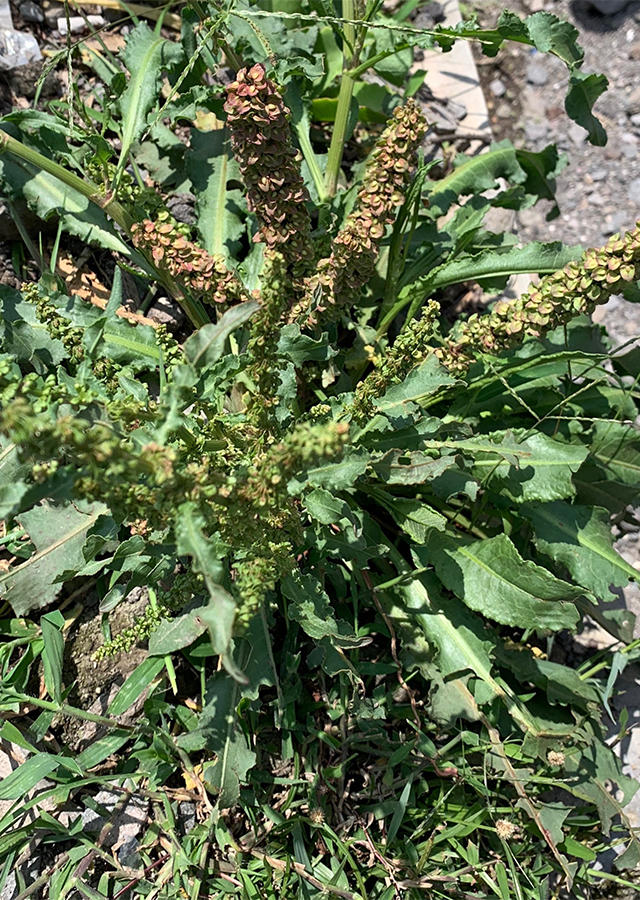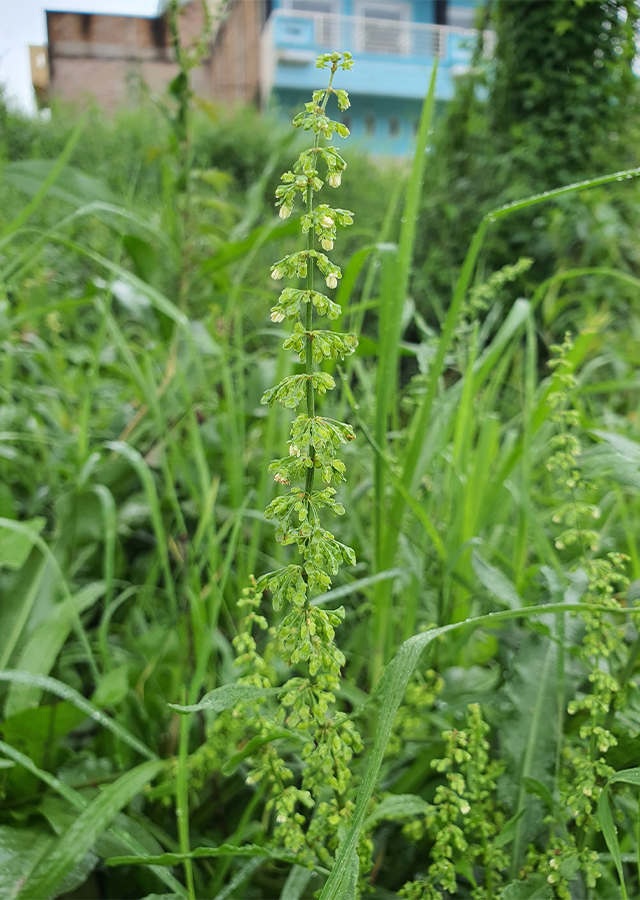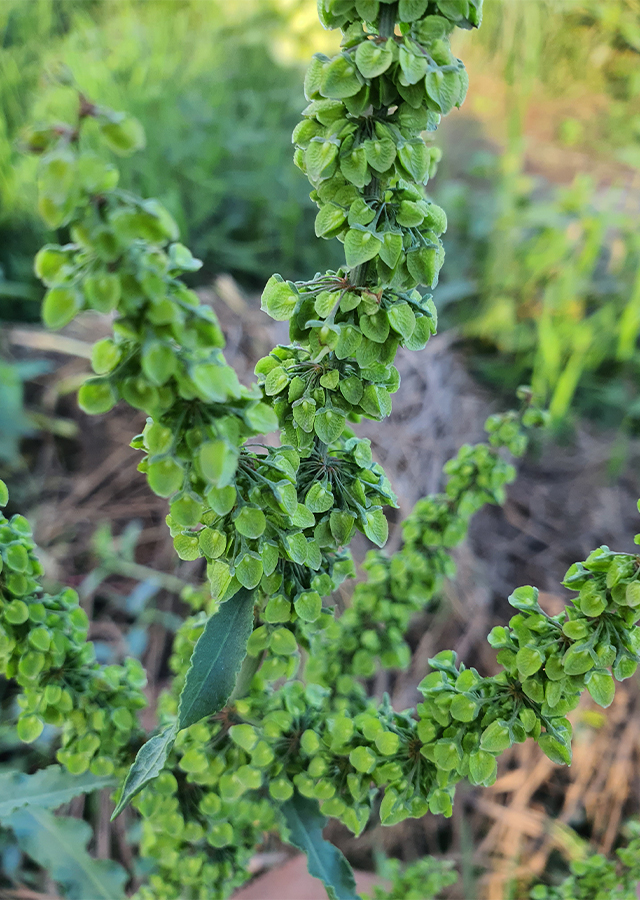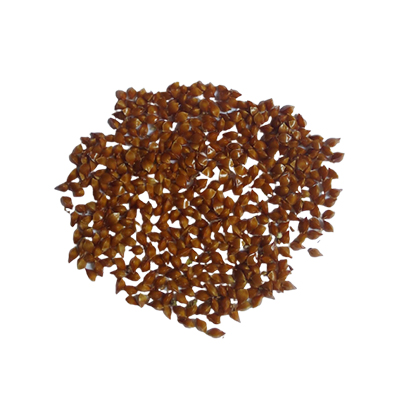Yellow Dock
Rumex crispus L.
Polygonaceae
Location in our garden
Principal



Synonym
Lapathum crispum (L.) Scop.
Rheum crispum G.Don
Rumex coreanus Nakai
Habitus
Herbaceous. An erect, sparingly branched, perennial plant growing up to 2(2.5) tall.
Part Used
Leaves
Seeds
Roots
Growing Requirements
Full Sunshine
Habitat
Wetland
Roadside
Grassland
Overview
Yellow dock is native to Eurasia, however it was characterized as a circumpolar plant, and has been very widely spread by human activity. Distribution is primarily within temperate regions, but it has also spread to highlands with cooler climates in equatorial areas in all continents, and may be found in scattered places north of the Arctic circle.
Vernacular Names
Oseille crépu (French), Kruset skræppe (Danish), Azeda-crespa (Portuguese), Krauser ampfer (German), Krulzuring (Dutch), Nagabagishigishi (Japanese), Zhou ye sua mo (Chinese).
Agroecology
Yellow dock grows best in areas where annual daytime temperatures are within the range 14-18°C but can tolerate 8-28°C. The plant can tolerate quite severe frosts. It prefers a mean annual rainfall in the range 800-1,000 mm, but tolerates 600-1,200 mm. Succeeds in most soils, preferring a moist moderately fertile well-drained soil in a sunny position. Prefers a pH in the range 5.5-6.5, tolerating 5.2-6.8.
Morphology
- Stems - stiff, usually with a smooth, stems brownish-red to greenish-brown, longitudinally striate, glabrous. On young plants, they are often single, on older plants mostly in groups from the branched or split crown.
- Leaves - basal leaves narrowly lanceolate or oblong-lanceolate, base shallowly cordate, rounded, truncate or cuneate, apex acute to obtuse, margins undulate or crisped, bluish green with petiole up to 20 cm long, as long as or shorter than lamina, 1–3 cm long in stem leaves.
- Inflorescences - racemes, rather dense, mostly between 10 and 50 cm long, representing branches from the axils of upper leaves of the stem and the top shoot.
- Flowers - hermaphrodite or unisexual, pedicellate, small with valves (inner sepals, sometimes known as tepals) that are 3-5 mm long and wide on pedicels which are 5-10 mm in length, yellowish to green to pinkish.
- Fruits - nut brown, shiny, 2.5–3 × 1.5–2 mm, sharply trigonous.
- Seeds - more or less polymorphic, mainly differing in size.
Cultivation
Propagated by seeds.
Chemical Constituents
Flavonoids (isorientin, vitexin, orientin and isovitexin), lipids, vitamins, carotenoids, organic acids, minerals, anthraquinones glycosides (chrysophanol and emodin), polysaccharides, triterpenoids, tannins, stilbenoids, phenolic compounds, β-sitosterol, physcion, gallic acid, catechin, hexadecanoic acid, kaempferol, and naphthalenes.
Traditional Medicinal Uses
- The root is alterative, antiscorbutic, astringent, cholagogue, depurative, laxative and mildly tonic.
- It is a gentle and safe laxative, less powerful than rhubarb in its action so it is particularly useful in the treatment of mild constipation.
- It has valuable cleansing properties and is useful for treating a wide range of skin problems.
- It is used internally in the treatment of diarrhoea, piles, bleeding of the lungs, various blood complaints and also chronic skin diseases.
- Externally, the root can be mashed and used as a poultice and salve, or dried and used as a dusting powder, on sores, ulcers, wounds and various other skin problems.
- The seed is used in the treatment of diarrhoea.
- A homeopathic remedy is made from the fresh root, used in the treatment of a specific type of cough.
Part Used
Reference Sources
- Idris, O.A., Wintola, O.A. & Afolayan, A.J. (2017). Phytochemical and antioxidant activities of Rumex crispus L. in treatment of gastrointestinal helminths in Eastern Cape Province, South Africa Oladayo. Asian Pac J Trop Biomed. 7(12):1071-1078.
- Idris, O.A., Wintola, O.A. & Afolayan, A.J. (2019). Comparison of the proximate composition, vitamins (ascorbic acid, α-tocopherol and retinol), anti-nutrients (phytate and oxalate) and the GC-MS analysis of the essential oil of the root and leaf of Rumex crispus L. Plants 8(51):1-15.
- Pareek, A. & Kumar, A. (2014). Rumex crispus L. – a plant of traditional value. Drug Discovery 9(20):20-23.



